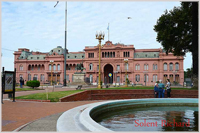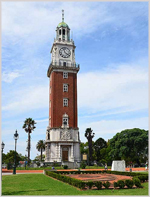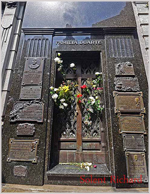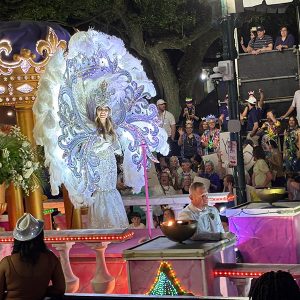 Armed with our trusty guide book, my wife and I were determined to get the most from this fascinating city.
Armed with our trusty guide book, my wife and I were determined to get the most from this fascinating city.
Our hotel, the NH City and Tower was ideally placed on the edge of the lively Bohemian district of San Telmo, within five minutes walking distance of the Plaza de Mayo. One of the great Buenos Aires Plazas and is surrounded by many famous Buenos Aires buildings, the most prominent being the palatial mansion officially known as 'Casa de Gobierno': the Executive Mansion and Office of the President of Argentina and the 'Piraide de Mayo', dedicated to the revolutionaries of 1810, who orchestrated Argentina's independence.
A short distance from the Plaza de Mayo is the Barrio (District) of Puerto Madero, a redeveloped old port area, the old warehouses now converted to Restaurants, shops and offices. It was here we got our first glimpse of the many street performances of the Argentinian Tango. Buenos Aires is renowned for these street performances and, as lovers of the Tango ourselves, we loved every performance we saw. It was to one of these restaurants that we were to return for our first taste of Argentinian steak with the atmosphere to match.
 Continuing along the waterfront towards the district of Retiro, our next point of interest was also our landmark guide, the tower of 'The Torre de los Ingleses'. A gift from the local British community to the city in commemoration of the Centennial of the 1810 Revolution, it was renamed after the Falklands War as the 'Torre Monumental'. It has a central position in the Plaza San Martín, on whose periphery is the Estación Retiro. The French style station building was designed by the British architects Eustace L. Conder, Roger Conder and Sydney G. Follet together with the engineer Reginald Reynolds. Building began in June 1909 and the station was opened on 1 August 1915. The steel structure for the building was made in Liverpool and re-assembled in Argentina. Though fully operational it is also a National Monument. There are two other monuments in the same Plaza, that of the Plaza's namesake, José de San Martín as well as the Monument for the fallen in the Falklands War.
Continuing along the waterfront towards the district of Retiro, our next point of interest was also our landmark guide, the tower of 'The Torre de los Ingleses'. A gift from the local British community to the city in commemoration of the Centennial of the 1810 Revolution, it was renamed after the Falklands War as the 'Torre Monumental'. It has a central position in the Plaza San Martín, on whose periphery is the Estación Retiro. The French style station building was designed by the British architects Eustace L. Conder, Roger Conder and Sydney G. Follet together with the engineer Reginald Reynolds. Building began in June 1909 and the station was opened on 1 August 1915. The steel structure for the building was made in Liverpool and re-assembled in Argentina. Though fully operational it is also a National Monument. There are two other monuments in the same Plaza, that of the Plaza's namesake, José de San Martín as well as the Monument for the fallen in the Falklands War.
Leaving the Retiro District and crossing into that of Recoleta, we were now heading for one of our prime target visits. At this point I would add that Buenos Aires is a city of many attributes none more so than its rich architecture. It is certainly very negotiable on foot and only crossing between San Telmo and La Boca, on our second day, could beat our walk through the streets of Recoleta.
 We arrived at La Recoleta Cemetery, a 14 acre site containing 4691 vaults, all above ground, of which 94 have been declared National Historical Monuments: including those of Eva Peron, Presidents of Argentina, the founder of the Argentine Navy and a granddaughter of Napoleon. Visit Wikipedia to see examples of the tombs, an amazing variety of ostentatious remembrance.
We arrived at La Recoleta Cemetery, a 14 acre site containing 4691 vaults, all above ground, of which 94 have been declared National Historical Monuments: including those of Eva Peron, Presidents of Argentina, the founder of the Argentine Navy and a granddaughter of Napoleon. Visit Wikipedia to see examples of the tombs, an amazing variety of ostentatious remembrance.
Heading back to our hotel we took a route through the Barrio of Monserrat that gave us the opportunity to take in Argentine Congress on the Avenida de Mayo and on the same Avenue the Palacio Barolo. A richly symbolic building ,the basic design, and eclectic style, was in accordance with the cosmology of Dante's 'Divine Comedy's. Indeed, the lighthouse at the top of the building can be seen all the way from Montevideo, Uruguay.
No visit to Buenos Aires would be complete without a walk along Avenida 9 de Julio with its landmark Obelisco de Buenos Aires a national monument and icon of Buenos Aires. It was built to commemorate the fourth centenary of the city's foundation and only a stone's throw away, The Teatro Colón , the main opera house in Buenos Aires, acoustically considered to be amongst the five best concert venues in the world.











